What was the Single European Act?
The Single European Act (SEA), which was signed in Luxembourg and The Hague on 17 and 18 February 1986 and entered into force on 1 July 1987, marked the most substantial change to the Treaties establishing the European Communities. Although its initial purpose was primarily of an economic nature, it has been viewed as a first step towards integration in the social policy sphere.
The aim was to clear the remaining barriers and provide for greater harmonisation, thereby making the European countries more competitive. The Single European Act paved the way for a genuine economic and monetary union of the Member States, which up to that point had been content to work together within the European Monetary System.
It also reformed the working procedures of the institutions: decision-taking by qualified majority vote was widened to cover new areas. The Single European Act empowered the European Community institutions to intervene directly in social affairs, accorded them a real right of legislative initiative and extended their action to the supranational level, beyond mere harmonisation of existing national laws.
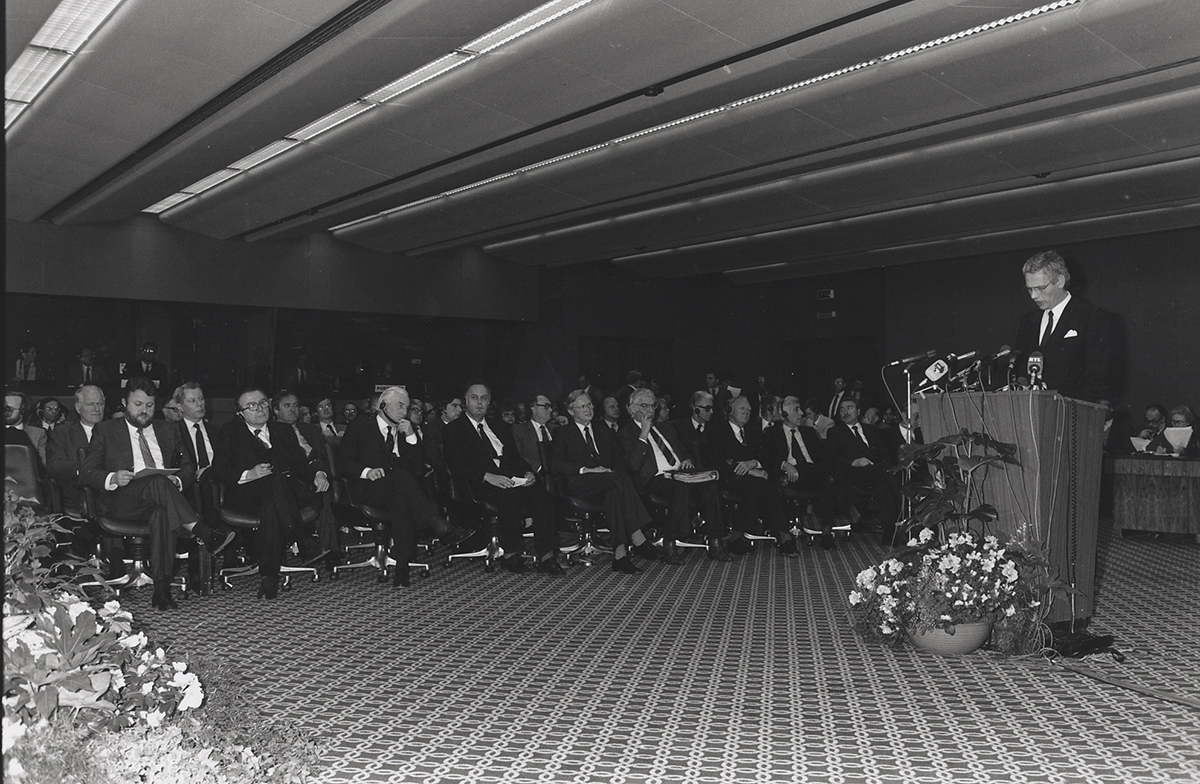 Meeting on the Single European Act (SEA) © European Communities, 1986 - European Parliament
Meeting on the Single European Act (SEA) © European Communities, 1986 - European Parliament
The European Parliament and the SEA: challenges and opportunities
As early as March 1987, the European Parliament, spurred on by its President, Lord Plumb, set up a Temporary Committee on making a success of the Single European Act. Its task was to comment on the framework being established by the European Commission on the basis of its communication entitled 'Making a success of the Single Act: a new frontier for Europe'.
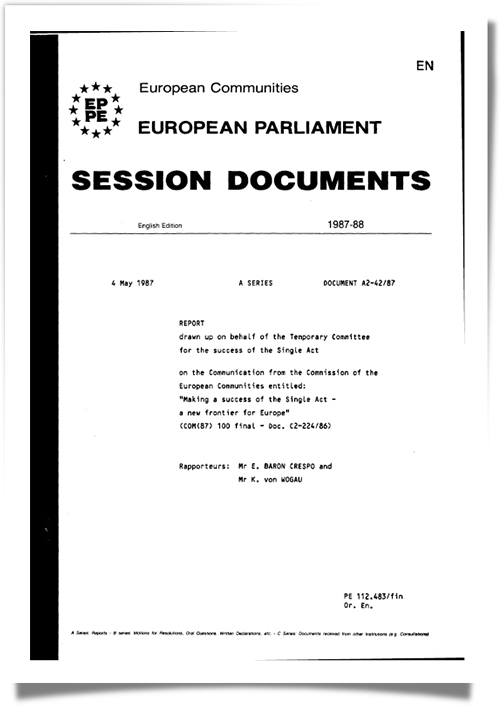
Despite significant time pressure, the temporary committee managed in less than three months to draw up several working documents and produce a parliamentary report, which Parliament debated at length in plenary on 13 May 1987 in the presence of prominent figures including the Commission President, Jacques Delors, and the Council President, Leo Tindemans.
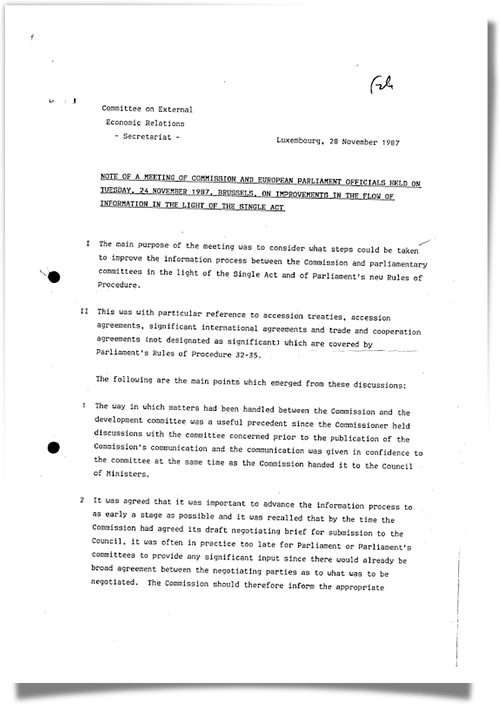
The Single European Act, which entered into force just six months after Lord Plumb was elected president, radically altered the European Parliament's powers. It established two new procedures, assent and cooperation. The assent procedures mean that Parliament was required to assent when a European Community association agreement was being concluded. The cooperation procedures, meanwhile, gave Parliament a say in the adoption of Community acts and served to develop its other parliamentary procedures. They reinforced the position of the Parliament in interinstitutional dialogue and gave it the possibility of two readings of the proposed legislation.
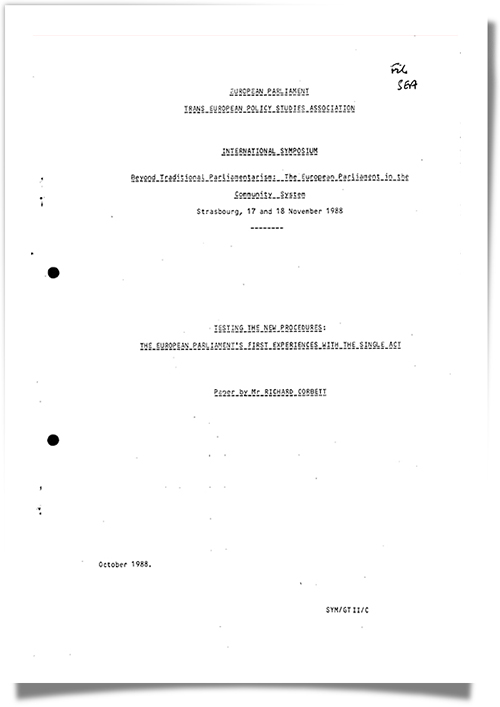
Parliament was therefore compelled to adapt its working methods in order to use its new powers to the best possible effect. It needed to reorganise itself rapidly, both politically and administratively. A more sophisticated legislative programme had to be put in place and the parliamentary committees focused on the new timetables. Commenting on this process, Lord Plumb said that this was a
“vital issue for our institution, which might otherwise have missed the opportunity to demonstrate its growing maturity. Our parliamentary committees have been provided with the necessary staff and have addressed themselves to the tight new schedules.”
Starting in June 1987, new provisions were drawn up and put in place under the aegis not only of the President of Parliament, but also of its Secretary-General, Enrico Vinci, as is described in the following note:
In November 1987, a significant improvement began to make itself felt in exchanges with the Commission, as can be seen from the summary record of a meeting of Parliament's Committee on External Economic Relations. More generally, this document reflects the trend in relations between the two institutions within the strategic framework provided by the interinstitutional agreements and it highlights Parliament's new powers deriving from the Single Act.
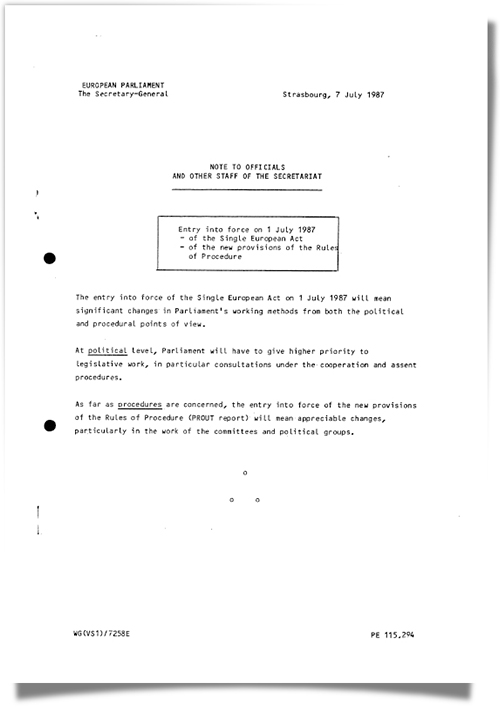 Note to European Parliament officials and other staff of the Secretariat (PDF): entry into force of the Single Act and the new provisions of the Rules of Procedure
Note to European Parliament officials and other staff of the Secretariat (PDF): entry into force of the Single Act and the new provisions of the Rules of ProcedureStrasbourg, 7 July 1987
Speaking of the challenge posed to Parliament by the implementation of the Single European Act, Lord Plumb was to conclude, with some pride and satisfaction, that
“all of the Members and officials concerned have had to take a leap in the dark, and the fact that Parliament has managed to adapt successfully to the new rules with very few hiccups is, to my mind, a real achievement.”